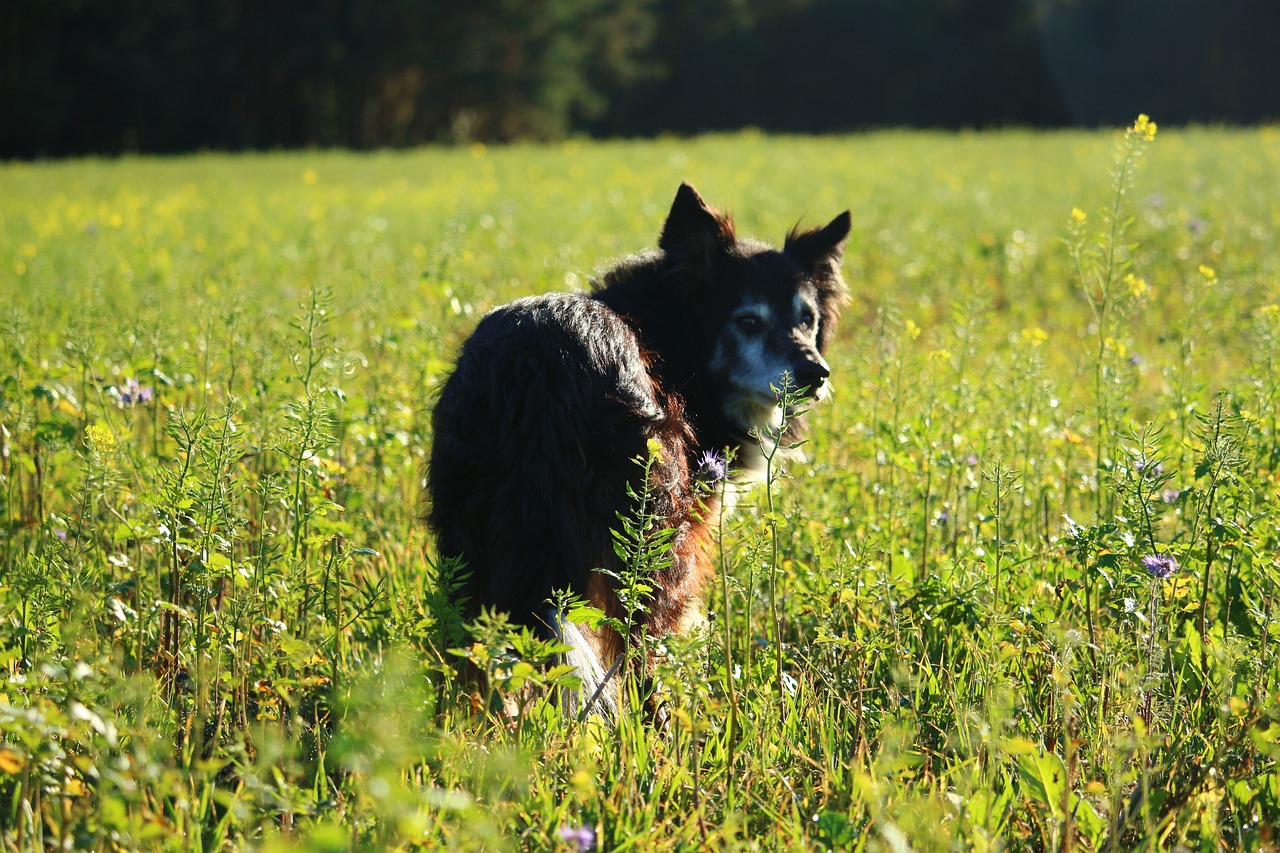
Do Dogs Suffer from Bee Allergies? While most dogs experience mild discomfort from bee stings, allergic reactions can occur, and they can be quite dangerous. In dogs with bee allergies, the response can escalate to anaphylactic shock, which is a life-threatening emergency. Multiple bee stings, especially in a short timeframe, can also pose risks.
Detecting a potential bee allergy in your dog can be challenging, so it’s essential to keep a vigilant watch if you suspect a bee sting. Symptoms typically manifest soon after the sting, but there may be delayed reactions, making continuous observation vital. The sting site is likely to swell, and if the sting is near the nose or mouth, it could impede your dog’s breathing. If you notice significant swelling within minutes, it’s crucial to seek immediate veterinary assistance.
Causes Of Bee Allergies In Dogs
Dogs tend to be naturally curious, and as they explore the world with their noses, they have a higher chance of sticking their nose directly into spots where bees fly around. They might also step on a bee during a joyful game of fetch.
Sometimes, a bee sting causes your furry friend to show signs of a bee allergy. This is due to the antibodies produced when the bee’s venom enters its body. Essentially, it sends the body into a mild state of shock by lowering the blood pressure. While this is a rare reaction, some dogs are more sensitive to bee venom, resulting in a canine allergy.
Symptoms Of Bee Allergies In Dogs
It’s important to know the signs and symptoms of a bee allergy and anaphylactic shock, which include:
- Difficulty breathing
- Vomiting or diarrhea
- Drooling
- Nibbling on the affected area
- Whining
- Swelling around the mouth, eyes, throat, or ears
- Collapse
- Weakness
Normally, a dog’s allergic reaction to a bee sting occurs immediately after the sting. Keep in mind that some dogs may be more sensitive to either wasps or bees, so it’s a good idea always to try and figure out what type of insect stung your dog.
Moreover, anaphylactic shock affects dogs’ livers and gastrointestinal systems first, rather than the lungs. This means that if your dog is going into anaphylactic shock, they’ll likely exhibit symptoms of digestive distress rather than respiratory distress. In this situation, your dog may have sudden onset diarrhea, vomiting, seizures, or excessive drooling. They might also have pale gums, a high heart rate, or a weak pulse. If not treated, anaphylaxis can be fatal.
Treating A Dog’s Allergy Symptoms After A Bee Sting
If your dog encounters a bee sting, or if you’re uncertain whether it was a bee or a wasp, your initial step should be to inspect the stinger left behind in your dog’s skin. Bees invariably leave their stingers, which continue to inject venom until removed, underscoring the importance of prompt extraction. A pair of tweezers from your pet emergency kit can aid in this task. Additionally, it’s essential to ascertain the number of stings, as this information can be valuable for the veterinarian.
Subsequently, delicately cleanse the affected area with mild soap and cool water to prevent infection. Be mindful that this process may be uncomfortable for your dog, so avoid excessive scrubbing. Utilize gentle, circular motions until you’re confident the area is thoroughly cleaned. Applying a cold, damp washcloth or an ice pack wrapped in a towel to the site can help reduce swelling.
As for administering Benadryl to your dog post-bee sting, while certain over-the-counter human antihistamines are safe for dogs, it’s generally advisable to abstain from offering human medications to your pet, as the wrong dosage can be hazardous. Your veterinarian is better equipped to prescribe the appropriate type and dosage of allergy medication for your dog.
For the ensuing 24 hours, it’s crucial to keep a vigilant watch over your canine companion for any potential delayed signs of an allergic reaction, including the onset of anaphylactic shock. While most allergy symptoms typically manifest within 10 minutes, there are instances when they may take hours to surface.
In the event of any allergy symptoms, promptly reach out to your veterinarian. Following a bee sting, your dog may feel agitated and anxious, so showering them with affection is not only comforting but also beneficial for both of you as you assess and address the situation.
When To Take Your Dog To The Vet For Bee Sting Allergies

It’s never a bad idea to consult a veterinarian if your dog has been hurt, especially if you’re unsure about what to look out for. The following situations always require urgent medical advice:
- If you suspect your dog is experiencing a severe allergic reaction
- Your dog has been stung in the mouth or around the nose, both of which can disrupt their breathing
- Your dog was stung multiple times
- Swelling that won’t go away
- Any of the symptoms of anaphylactic shock
Anaphylaxis is an extremely emergent situation. If you think your dog might be experiencing anaphylactic shock, you should get emergency vet assistance immediately. The vet will usually treat your dog with adrenaline (also called epinephrine) via IV injections. They’ll also treat any other symptoms your dog has.
Bee Allergies In Dogs: FAQs
How do I know if my dog is allergic to bees?
Bee stings are a natural risk when spending time outside, especially in warmer weather. Additionally, dogs may run into a beehive, which can lead to multiple stings since these insects are protective of their homes. Most bee stings are fairly minor and can be easily treated at home. In some cases, however, it can turn more serious.
Your pup might be allergic to bees if they experience severe itching, vomiting, diarrhea, difficulty breathing, extreme swelling at the site of the sting, or collapse. Watch your dog’s reaction to bee stings and seek veterinary advice immediately if your dog shows any of these signs.
What should I do if my allergic dog is stung by a bee?
If you notice signs of an allergic reaction in your dog following a bee sting, it’s advisable to promptly seek veterinary care. Make an effort to keep your dog calm during this time. Applying a cool, damp cloth to the affected area can help alleviate pain and reduce swelling, while also discouraging them from licking the sting. Always consult with a veterinarian before administering any allergy medication to your dog.
Bee stings are difficult to entirely prevent, even with all necessary precautions. However, you can minimize the risk by avoiding areas with high bee activity when spending time outdoors with your dog. Understanding the essential steps to take in the event of an allergic reaction is crucial. So rest assured, your canine companion can still enjoy the outdoors safely.
How long does an allergic reaction last in dogs after a bee sting?
For most dogs, the symptoms of a bee sting should improve after 12-24 hours. Keep an eye on your dog during this time and contact your vet immediately if new symptoms appear. Apply a cold compress to the affected area to help minimize swelling and pain and keep your dog calm and comfortable. If your dog is stung by a bee, remember to remove the stinger first.
Final Notes
Are dogs prone to bee allergies? While dogs can develop bee allergies, severe allergic reactions to bee stings are uncommon. It’s advisable to closely observe your dog for about an hour after a bee sting to ensure they don’t exhibit any severe allergy symptoms. Some swelling, itching, and mild discomfort are typical reactions, but if you notice your dog experiencing breathing difficulties, intense itching, vomiting, diarrhea, or collapsing, it’s imperative to promptly seek veterinary assistance.
If your dog has encountered a bee or wasp sting, Dutch can offer assistance. Connect with a licensed veterinarian online from the comfort of your home to receive guidance on tending to your dog’s bee sting. Our veterinarians are readily available to provide advice and address your inquiries. Nevertheless, if your dog displays severe allergy symptoms, it’s crucial to promptly seek emergency care from your local veterinarian.